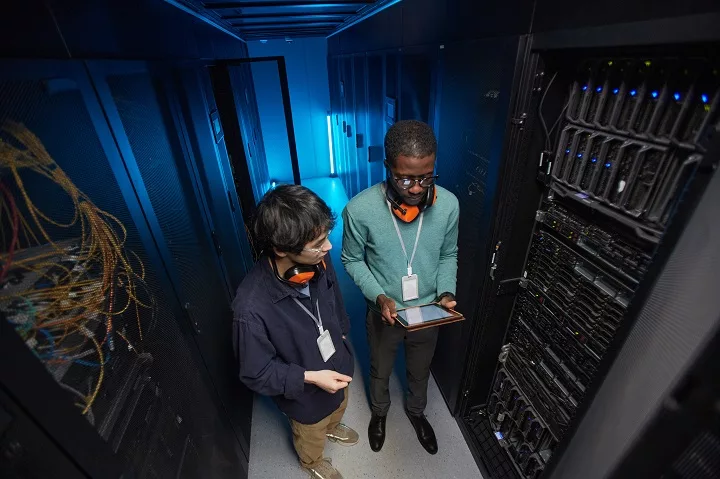 The race to capture, store, and process information is at full tilt in a world fueled by data. Companies across the globe are recognizing the immense value in their data, but managing this precious asset is challenging. That is where Data Center Colocation Companies come into play, delivering scalability, cost savings, and security that businesses need to flourish in the data age. This narrative exploration provides a comprehensive insight into the world of colocation data centers, their functions, and the spectrum of services they offer.
The race to capture, store, and process information is at full tilt in a world fueled by data. Companies across the globe are recognizing the immense value in their data, but managing this precious asset is challenging. That is where Data Center Colocation Companies come into play, delivering scalability, cost savings, and security that businesses need to flourish in the data age. This narrative exploration provides a comprehensive insight into the world of colocation data centers, their functions, and the spectrum of services they offer.
Powerhouse of Data: What Is a Colocation Data Center?
A colocation data center or “colo,” is a facility where businesses can rent space for servers and other computing hardware. Here’s how they break down:
- Space & Infrastructure: These data centers provide the physical space necessary to house servers, including critical infrastructure like power supplies, cooling systems, and security measures.
- Reduced Overhead: Colocation centers provide businesses access to advanced infrastructure without requiring high initial investment and ongoing maintenance costs.
- Reliability: With dedicated power backups and high bandwidth, these centers ensure your data is always accessible and secure.
- Scalability: As businesses grow, data storage and processing needs increase. Colocation data centers provide the flexibility to scale up or down according to business needs.
Collaboration in Connectivity: How Do Data Center Colocation Companies Work?
Data center colocation companies operate by providing:
- Space Rental: They rent out rack space or cabinets where businesses can install their servers and other hardware.
- Power & Cooling: These companies maintain optimal temperatures in the data center to prevent overheating and provide uninterruptible power supply systems for seamless operation.
- Security & Compliance: They ensure data protection with robust physical and cybersecurity measures. They also adhere to compliance standards to meet the specific requirements of different industries.
- Technical Support: Many offer on-site technical support, ready to address any issues with the housed hardware.
Diverse Data Centers: A Spotlight on the Multiple Types of Facilities
Data centers come in different types based on the services they offer:
- Retail Colocation: Businesses rent space by the rack or cabinet in retail colocation. It is ideal for small to medium businesses with moderate IT needs.
- Wholesale Colocation: Companies lease entire dedicated suites or data halls in wholesale colocation. It is lucrative for large businesses with substantial IT needs.
- Managed Colocation: In this model, the colocation provider offers managed services for space rental, server maintenance, upgrades, and troubleshooting.
- Hybrid Colocation: It is a blend of colocation and cloud services, providing businesses with the benefits of both environments for a more flexible and scalable solution.
Size Matters: Estimating Server Room Size
A typical data center allocates about 65% of its total space for server rooms. The rest of the space houses offices, employee amenities, and necessary infrastructure like HVAC systems and power distribution hardware.
Foundation of Functionality: Understanding the Role of Floor Tiles
Data centers utilize standardized floor tiles to organize their space. A typical server rack occupies a space of 4 ft x 2 ft, equivalent to 2-floor tiles in-depth and 1 tile in width. However, server racks can also be 3 ft x 2 ft, leading to a different configuration known as the “7-tile pitch.” An 8-tile pitch configuration is often used to provide adequate walking space, resulting in 28 occupied tiles and 44 unoccupied tiles per server cluster.
Digital Counts: Number of Servers in a Data Center
To estimate the number of servers, consider Google’s Pryor Creek data center, which spans a huge square foot. The calculation involves figuring out the number of floor tiles making up a significant portion of the total data center area and then accounting for the server racks’ space occupation.
Power to Perform: The Role of Power Capacity
The power capacity of a data center significantly influences the number of servers it can accommodate. For example, a data center with the largest square footage can host server racks according to its power capacity.
Power Play: Variations in Power Usage
Server racks’ power usage differs based on their purpose. A server hosting WordPress sites would consume less power than a server running JavaScript bots, which would use less power than a render farm. These power variations must be factored into the data center’s power capacity calculations.
Let Us Supercharge Your Data Strategy
With leading Data Center Colocation Companies like Rack59 Data Center, businesses can harness the power of their data without the heavy overheads of managing a private data center. If you want to optimize your data management while focusing on your core competencies, explore the power of data center colocation services today. Start today for a future where your data works for you!